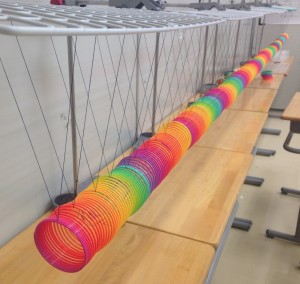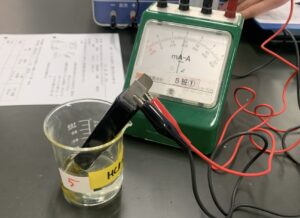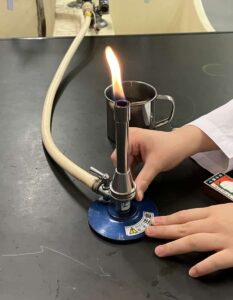The Slinky Secret: Visualize Sound and Earthquakes with a Toy Spring
I’m Ken Kuwako, your Science Trainer. Every day is an experiment!
What comes to mind when you hear the word “wave”? Maybe the shimmering waves of the ocean, or the ripples spreading across your bathtub? In fact, our world is full of “waves” that are invisible but incredibly important. The most common example is sound. Another one is the seismic waves that travel from deep beneath the earth.
This time, I’m thrilled to share a special experiment that uses a simple toy spring to reveal the true nature of a specific type of invisible wave called the Longitudinal Wave. This is a device we perfected through trial and error with the students, and the excitement it generated was huge! I encourage you to try this at home and experience the wonder of waves!
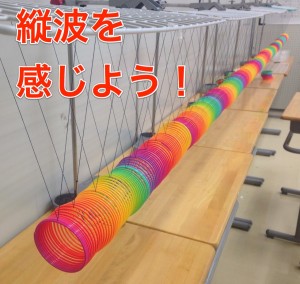
What exactly IS a Longitudinal Wave?
The waves we usually picture, like ocean waves, involve the water moving up and down while the wave travels forward. These are called Transverse Waves.
In contrast, a Longitudinal Wave is a wave where the particles of the medium (the stuff the wave travels through) vibrate parallel to the direction the wave is moving. Does that sound a bit complicated? Imagine a packed train: when someone behind you gives a slight push, that “push” or pressure travels quickly down the line of people. Each person only moves back and forth a little, but the “crowded part” moves forward. That’s the perfect image for a longitudinal wave!
In fact, the sound that reaches our ears is a type of longitudinal wave! We perceive sound as the alternating passage of air’s “tightly packed parts (compressions)” and “sparsely distributed parts (rarefactions)”. This apparatus allows us to visualize those air vibrations through the expansion and contraction of the springs!
Science Recipe: How to Build a Longitudinal Wave Generator
Despite the fancy name, the device is very simple to build, and the materials are easy to find.
What You’ll Need
- Toy springs (stretchable metal or plastic slinky-type springs)
- Wire mesh or grid (available at dollar/100-yen stores)
- Cellophane tape (or Scotch tape)
Instructions
- Use tape to link several toy springs together in a straight line. The longer you make the chain, the more dramatic the wave you can observe.
- Hang the linked springs on the wire mesh at equal intervals, as shown in the photo. Here is a crucial tip: it’s all about the spacing between the hanging points. When we tried it with the students, we found that if the spacing was too narrow or too wide, the wave wouldn’t transmit properly. Too narrow, and the wave loses momentum immediately; too wide, and the wave travels too fast to observe. Finding that perfect “sweet spot” is part of the fun of this experiment!
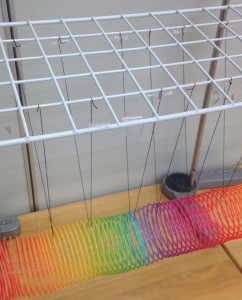
- Once everything is hung, you’re done! Now, gently shake one end!
The Thrilling Moment! Watch the Wave Come to Life
It’s always better to see it than to just hear it explained. What happens when you shake the end? Watch the videos below!
How was it? Could you see the “compressed” parts where the springs bunch up and the “rarefied” parts where they stretch out, traveling forward like a living thing? This is the very essence of a Longitudinal Wave, the true form of sound and seismic P-waves (the initial tremor)!
It’s an easy device to build, but you can make it even more interesting by changing the length of the springs or fine-tuning the spacing. I hope you and your family experience this exciting phenomenon!
Inquiries and Requests
Bring the wonder and fun of science closer to you! We’ve put together easy-to-understand tips and fun science experiments you can do at home. Feel free to browse around!
- The content from this Science Blog has been turned into a book. Find out more here.
- About the administrator, Ken Kuwako: here
- For various requests (writing, lectures, experiment workshops, TV supervision/appearances, etc.): here
・Article updates are posted on X!
![]() We post experiment videos on the Kagaku no Neta Channel!
We post experiment videos on the Kagaku no Neta Channel!

